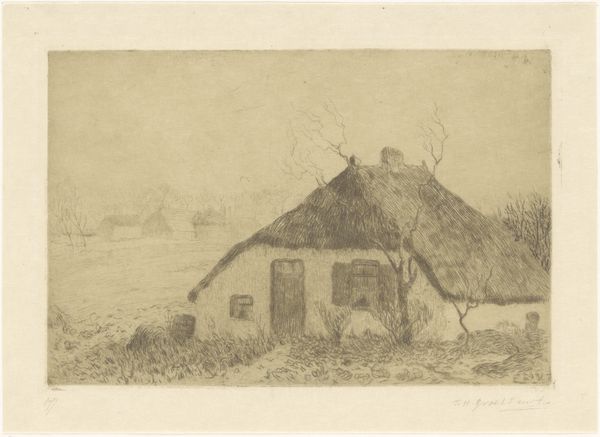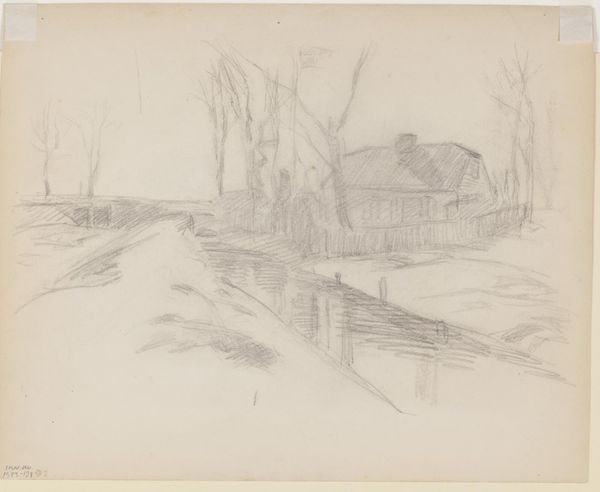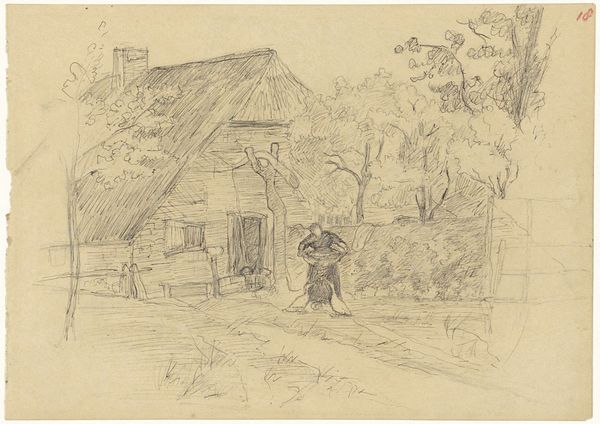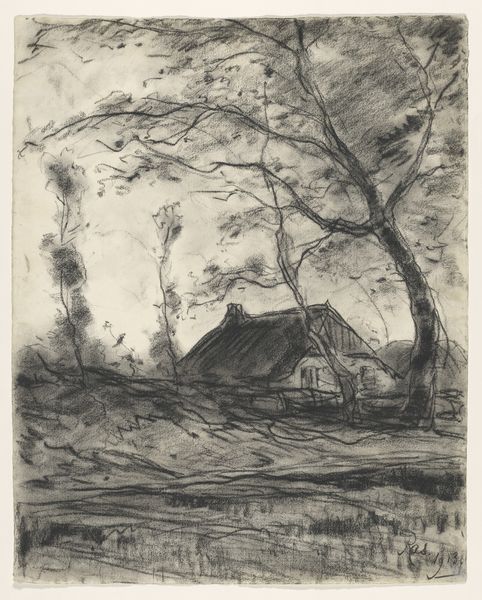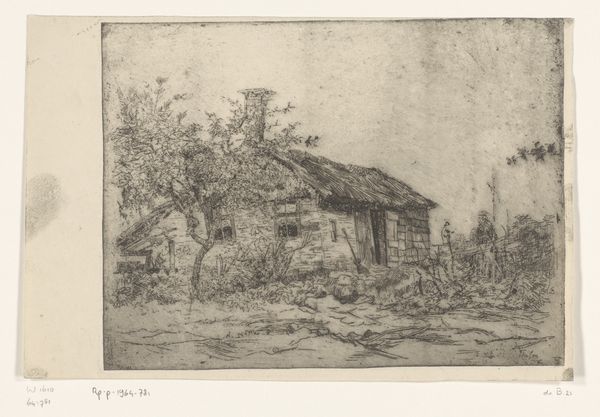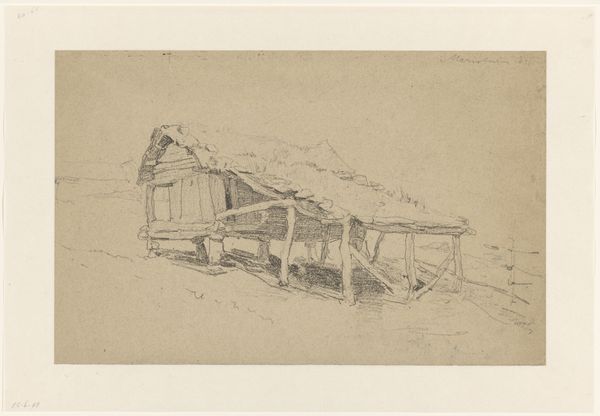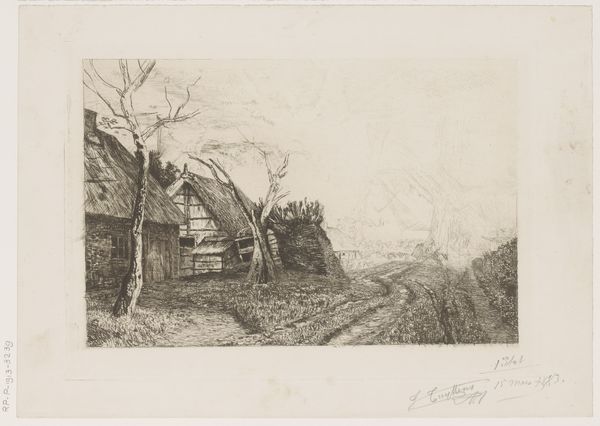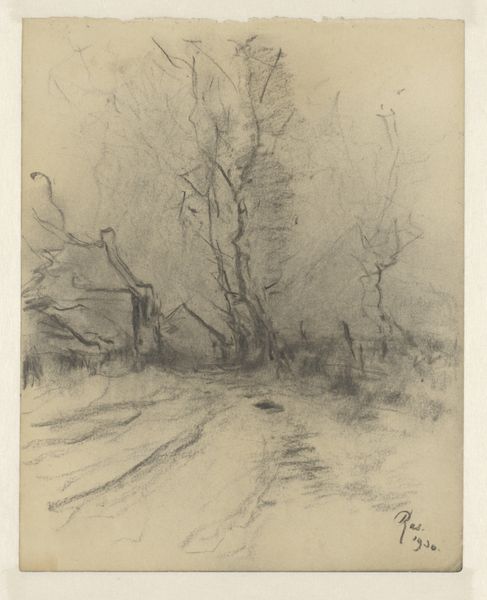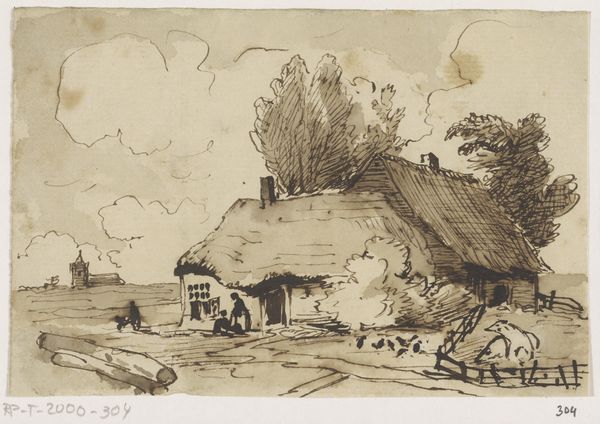
Dimensions: height 247 mm, width 342 mm
Copyright: Rijks Museum: Open Domain
Editor: So, this is "Woning bij bosrand," or "House by the edge of the forest," by Pieter Ras, from 1930. It's a pencil drawing, and there's a melancholy feel to it, with the starkness of the landscape. What catches your eye in terms of its cultural and historical context? Curator: I'm immediately drawn to the accessibility of the medium. Pencil, paper – these were materials increasingly available, allowing a broader segment of society to engage in artistic production, not just observe it. Consider the shift away from solely commissioned portraits of the wealthy; this sketch suggests a more democratic approach to artmaking. What kind of labor do you think went into the production of these materials? Editor: I hadn’t considered that! Presumably, the labor involved in producing the pencil and paper, making art creation itself more widely accessible… How did this democratization of art materials influence artistic subjects? Curator: Exactly! The choice of subject – a humble dwelling, the edge of a forest – speaks to an interest in the everyday. It moves away from idealized landscapes to a grittier reality. What about the material application - does the artist call attention to craft? Editor: I guess it does. The lines are rough and the textures coarse, but it could also be a quick sketch, prioritizing capturing the scene efficiently rather than creating a highly polished drawing. It is impressionistic. Curator: Precisely, and that sketch-like quality highlights the act of observation and production. Think of the time spent creating this: from material production to its artful manipulation in recording everyday spaces. And how does the accessibility of materials interact with the final work presented to the art viewer? Editor: This has made me reconsider how everyday materials shaped not just art *making* but also its subjects and potential audiences, beyond purely aesthetic considerations. Curator: Me too. Looking beyond the landscape we must recognize it as another product consumed by contemporary viewers like you and me, which invites more people into the conversation!
Comments
No comments
Be the first to comment and join the conversation on the ultimate creative platform.




